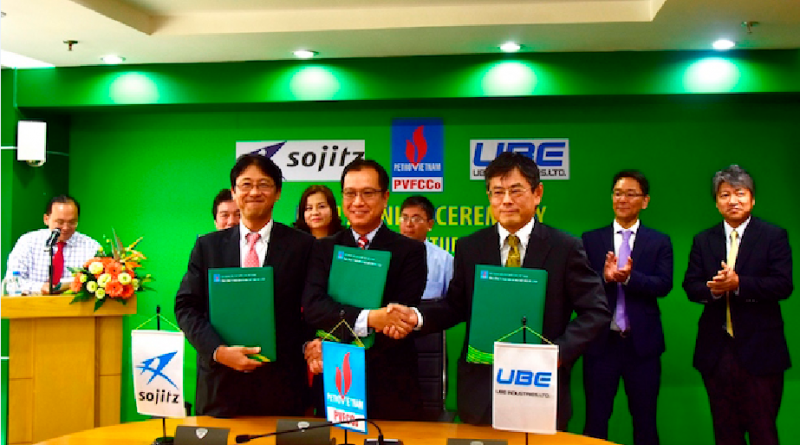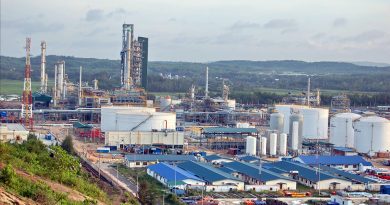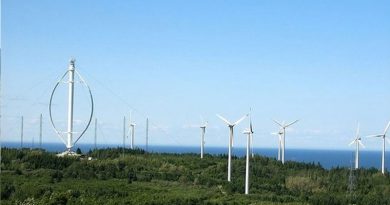PVFCCo finds Japanese partners for ammonia plant
PetroVietnam Fertiliser and Chemicals Corporation (PVFCCo) will co-operate with Japanese partners to develop an ammonia (NH3) plant to meet the increasing demand of fertiliser, rubber as well as domestic petrochemical manufacturers.
Accordingly, PVFCCo, UBE Industries Ltd. (UBE), and Sojitz Corporation (Sojitz) has signed a memorandum of understanding (MOU) to study opportunities to construct a plant with a designed capacity between 1,500 and 2,000 tonnes per day in the southern region.
The consortium will carry out the pre-feasibility study within six months after signing the MOU. The project is part of PVFCCo’s long-term strategy to become Vietnam’s leading fertiliser and chemical producer.
PVFCCo currently operates Phu My fertiliser plant with a NH3 manufacturing workshop inside. It has increased the capacity of the workshop from 450,000 tonnes to 540,000 tonnes of ammonia per year.
PVFCCo expects that its experience in operating the workshop will prove a big advantage when investing and building a similar NH3 plant with Japanese partners.
Being Japan’s leading chemical and caprolactam producer and ammonia distributor, UBE currently has manufacturing plants in Japan, Spain, and Thailand. Once the Vietnamese plant comes into operation, UBE will act as both the investor and the distributor.
Sojitz, a Japanese diversified company covering production and trade of chemicals, has been on the Vietnamese market for a long time. It has been co-operating with Vietnam’s oil and gas group PetroVietnam in studying projects on gas processing, including using gas from Ca Voi Xanh (Blue Whale) oilfield to produce methanol and derivatives.
In Vietnam, apart form being an important input material for fertiliser manufacturing, ammonia is used to fuel industrial factories, including chemical and rubber factories.
The demand for ammonia in Vietnam is expected to be 581,000 tonnes per year by 2018, and increase to 681,000 tonnes per year by 2023. Vietnam currently imports 100,000 tonnes a year.
Source: VIR









